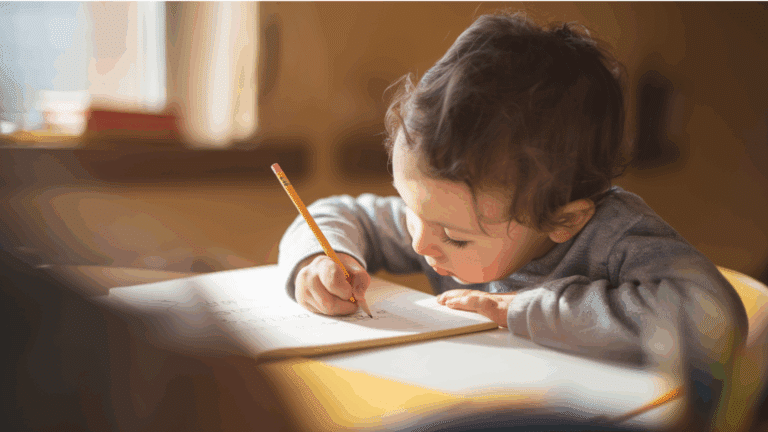Do you notice how children sometimes struggle to name what they’re feeling? Many kids find it hard to express emotions beyond basic “happy” or “sad.”
They become frustrated when complex feelings arise, but lack the words to explain them.
Kids who understand their emotions can build better relationships and solve problems more effectively. They develop stronger social skills and grow into more confident individuals.
This guide offers a list of emotions for kids, along with practical tips and fun activities to help them recognize and manage their feelings. Parents and teachers can use these resources to create meaningful conversations about emotions.
Ready to help the children in your life develop emotional intelligence? Let’s look at how understanding feelings can make a positive difference in their growth and development.
The Importance of Emotional Literacy in Children
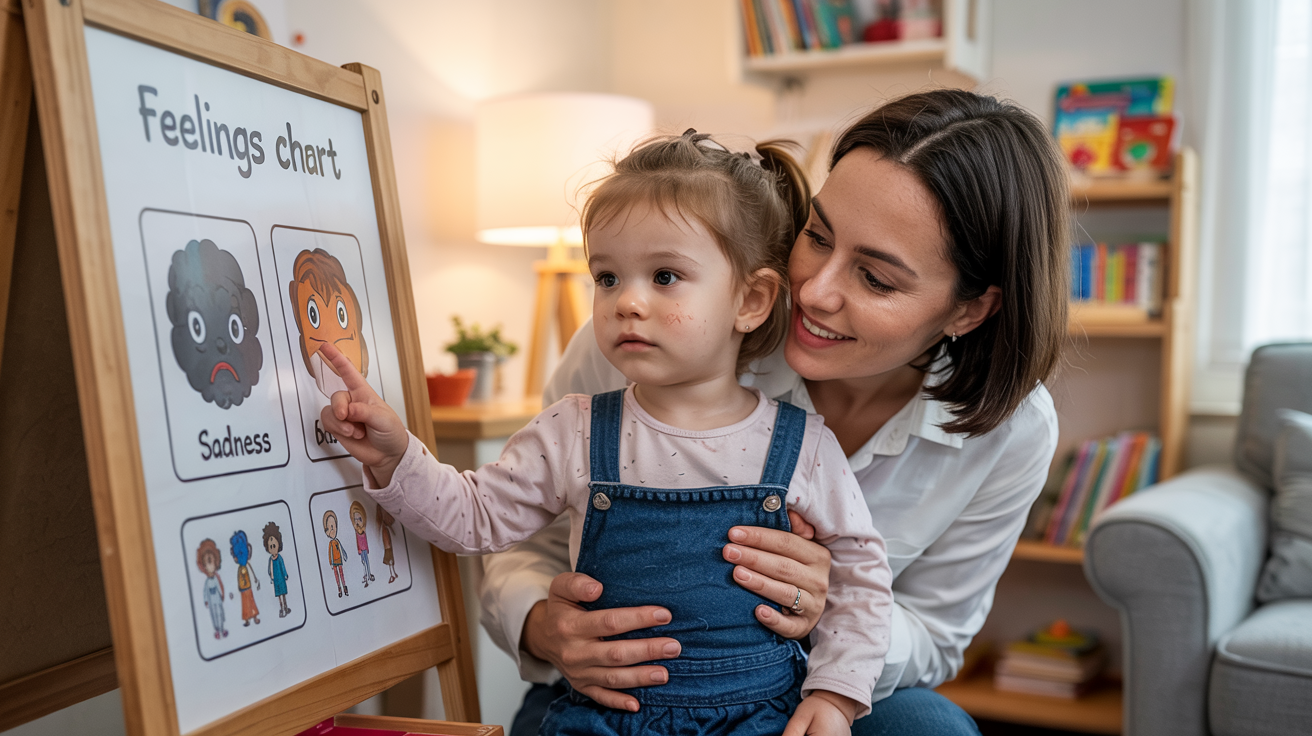
Children who can identify and talk about their feelings tend to handle life’s ups and downs better. When kids put names to what they feel, they gain control over those emotions instead of being controlled by them.
This skill helps them at home, in school, and as they grow older.
Research from Yale Center for Emotional Intelligence shows that children with strong emotional literacy skills perform better in school and have fewer behavior problems.
They also form healthier friendships and show more empathy toward others. According to Dr. Marc Brackett’s study, these skills can be taught and improved with practice and guidance.
Here’s how emotional literacy benefits children in different areas of development:
| Area of Development | Benefits of Emotional Literacy |
|---|---|
| Academic Success | Better focus, higher grades, improved problem-solving |
| Social Skills | Stronger friendships, less conflict, better teamwork |
| Mental Health | Reduced anxiety, fewer tantrums, greater resilience |
| Physical Health | Better sleep patterns, fewer stress-related issues |
| Family Relationships | More open communication, deeper bonds, less tension |
These benefits show why teaching children about emotions should be as important as teaching them to read or count. The skills they learn now will serve them throughout their lives.
List of Emotions for Kids and Their Meanings
Below are five core emotions that help children understand their basic feelings. This list of emotions for kids helps them put names to the many feelings they experience but might struggle to identify:
Happiness
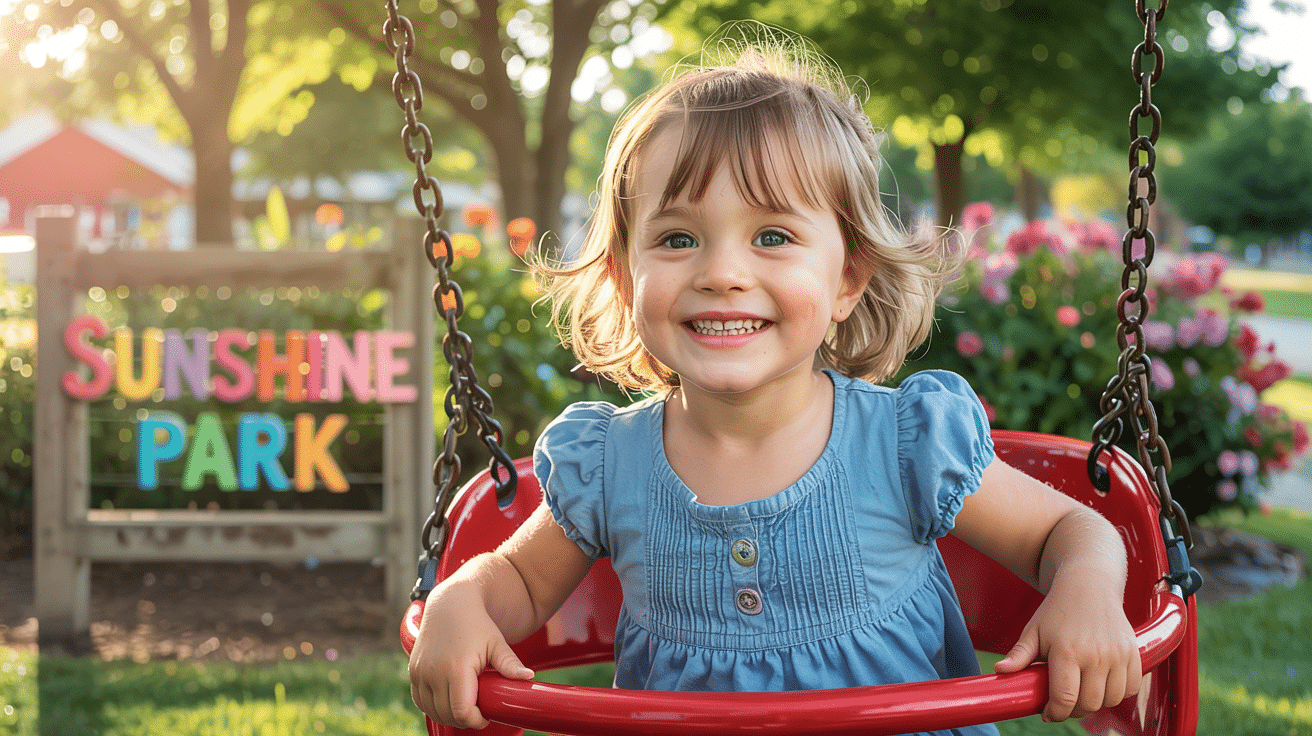
That warm, sunny feeling when things go well. Kids feel this when they play with friends, get a treat, or finish something they worked hard on. Happiness helps children know when something is good for them.
Here’s a list of emotions to help you understand happiness better:
-
Joyful: When you feel so happy, you want to jump and smile really big.
-
Excited: When you feel happy about something that’s about to happen.
-
Proud: When you feel good about something you did well.
-
Grateful: When you feel thankful for something nice someone did.
-
Hopeful: When you believe good things will happen soon.
-
Content: When you feel calm and satisfied with what you have.
-
Pleased: When something turns out just the way you wanted.
-
Cheerful: When you feel bright and happy all day long.
-
Playful: When you feel like having fun and being silly with others.
-
Calm: When your body and mind feel peaceful and relaxed.
-
Friendly: When you feel warm and kind toward other people.
-
Confident: When you believe in yourself and your abilities.
-
Interested: When something catches your attention in a good way.
-
Amused: When something makes you laugh or smile.
-
Relieved: When something stressful is over and you can relax.
-
Safe: When you feel protected and free from worry.
-
Loved: When you feel cared for by family or friends.
-
Satisfied: When you’ve had enough of something good.
-
Brave: When you face something scary, but do it anyway.
-
Curious: When you want to know more about something new.
Sadness
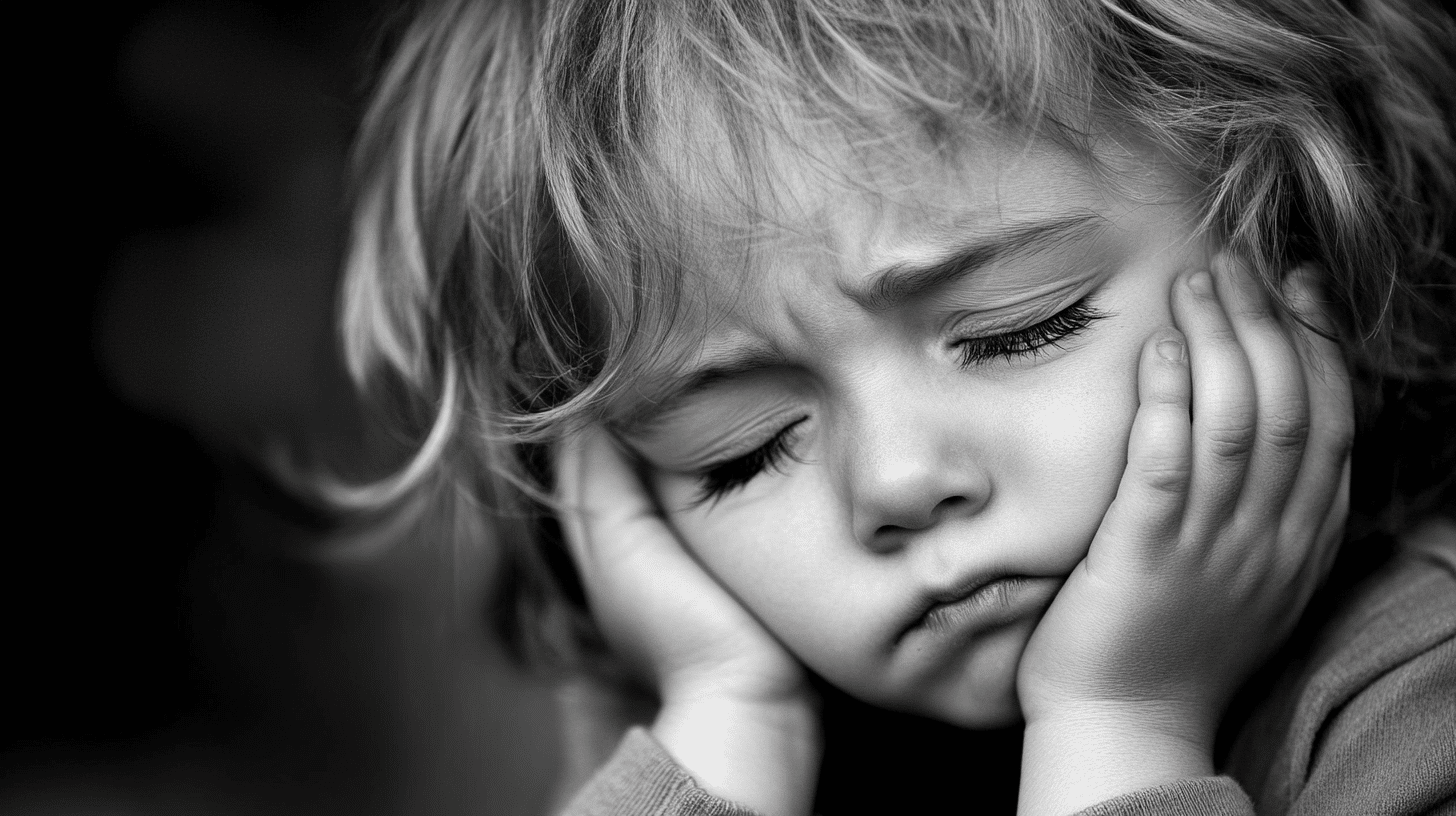
The heavy, blue feeling that comes when something hurts or doesn’t work out. Children might feel sad when they lose a toy, miss someone, or can’t do something they wanted to do. Sadness helps kids know what matters to them.
Here’s a list of emotions to help you understand sadness better:
-
Disappointed: When something you hoped for doesn’t happen.
-
Lonely: When you wish someone was with you but you’re by yourself.
-
Sorry: When you feel bad about something you did wrong.
-
Hurt: When someone’s words or actions make your feelings sore.
-
Left out: When others don’t include you in their games or talks.
-
Bored: When nothing seems fun or worth doing right now.
-
Gloomy: When you feel down and things seem dark or gray.
-
Upset: When something bothers you and mixes up your feelings.
-
Guilty: When you know you did something wrong and feel bad about it.
-
Missing: When you think about someone who isn’t with you now.
-
Tired: When your body and mind need rest and feel slow.
-
Embarrassed: When you feel silly because of a mistake or attention.
-
Bothered: When something keeps annoying you or makes you feel off.
-
Homesick: When you’re away and miss your home and family.
-
Worried: When you keep thinking about problems that might happen.
-
Uncomfortable: When something doesn’t feel right in your body or mind.
-
Small: When you feel less important or noticed than others.
-
Empty: When you feel like something is missing inside you.
-
Shy: When you feel nervous around others and don’t want to speak up.
-
Confused: When you don’t understand what’s happening or why.
Anger

The hot, fiery feeling that bubbles up when something seems unfair or wrong. Kids might feel angry when someone takes their toy or breaks their creation. Anger helps children set limits and stand up for themselves.
Here’s a list of emotions to help you understand anger better:
-
Frustrated: When you try hard but can’t do something the way you want.
-
Annoyed: When something small bothers you over and over.
-
Mad: When you feel very upset about something unfair.
-
Grumpy: When little things make you feel cross and short-tempered.
-
Jealous: When you want something that someone else has.
-
Impatient: When you don’t want to wait and feel restless.
-
Bothered: When something keeps bugging you and won’t stop.
-
Furious: When you feel so angry that your body feels hot.
-
Irritated: When small things get on your nerves and bug you.
-
Resentful: When you keep feeling upset about something unfair.
-
Envious: When you wish you had what others have.
-
Defensive: When you quickly protect yourself from others’ words.
-
Cranky: When you feel easily upset and want to be left alone.
-
Mean: When you want to say or do hurtful things to others.
-
Stubborn: When you refuse to change your mind no matter what.
-
Disgusted: When something seems so bad you want to stay away.
-
Bitter: When bad feelings from the past stick with you.
-
Fed up: When you’ve had enough and can’t take anymore.
-
Vengeful: When you want to get back at someone who hurt you.
-
Offended: When someone says or does something that hurts your feelings.
Fear
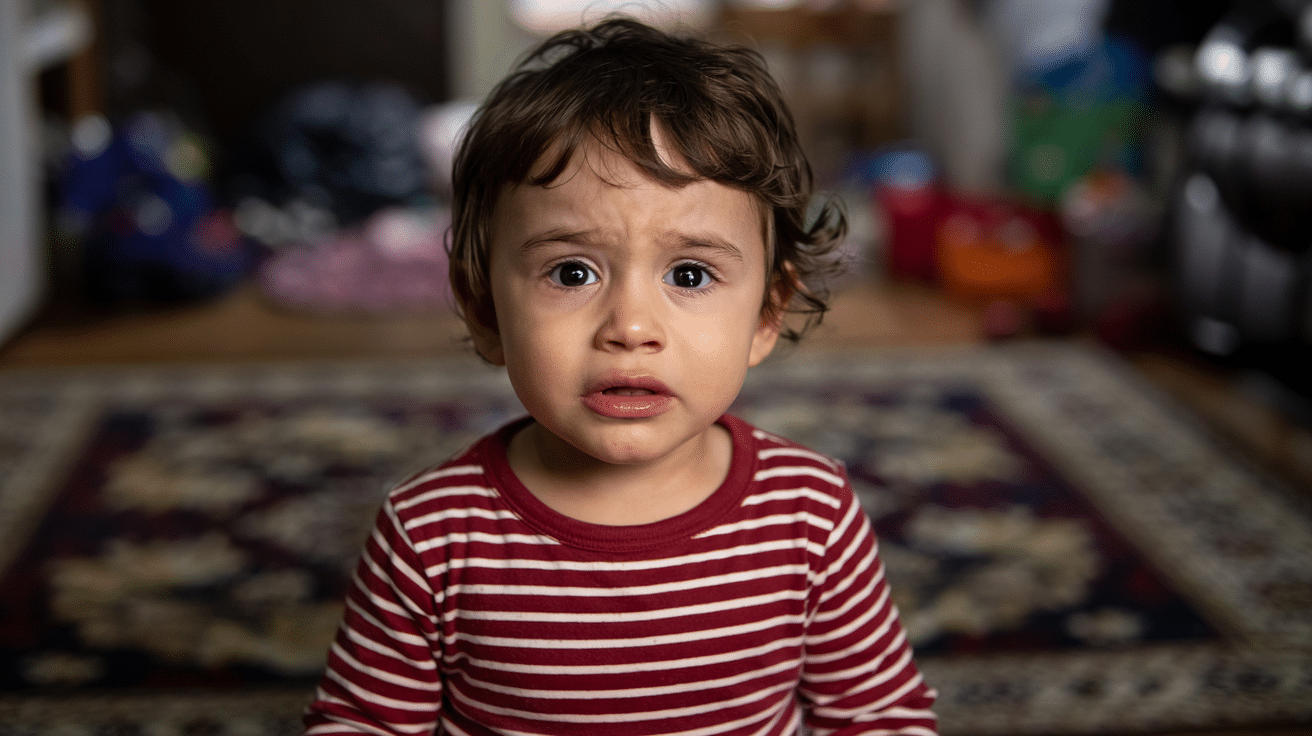
The shaky, alert feeling that warns of danger. Children might feel fear of loud noises, the dark, or new situations. Fear helps kids stay safe and careful when needed.
Here’s a list of emotions to help you understand fear better:
-
Scared: When something makes you feel unsafe or in danger.
-
Nervous: When your tummy feels funny and you can’t sit still.
-
Anxious: When you keep worrying about what might happen next.
-
Startled: When something sudden makes you jump or gasp.
-
Timid: When you feel too shy or afraid to try new things.
-
Panicked: When fear takes over and you can’t think clearly.
-
Stressed: When too many worries pile up and make you feel tight.
-
Uneasy: When something feels off but you can’t say why.
-
Shocked: When something so surprising happens, you can’t move.
-
Terrified: When you feel the biggest, strongest fear possible.
-
Insecure: When you don’t feel sure about yourself or your safety.
-
Hesitant: When you pause before doing something because of fear.
-
Wary: When you’re careful because you don’t fully trust something.
-
Doubtful: When you’re not sure if you can do something well.
-
Threatened: When you feel someone might hurt you or take something.
-
Overwhelmed: When too much is happening and you can’t handle it all.
-
Vulnerable: When you feel open to being hurt or in danger.
-
Cautious: When you move slowly and carefully to avoid problems.
-
Frightened: When something scary makes your heart beat fast.
-
Alarmed: When you suddenly notice something that might be unsafe.
Surprise
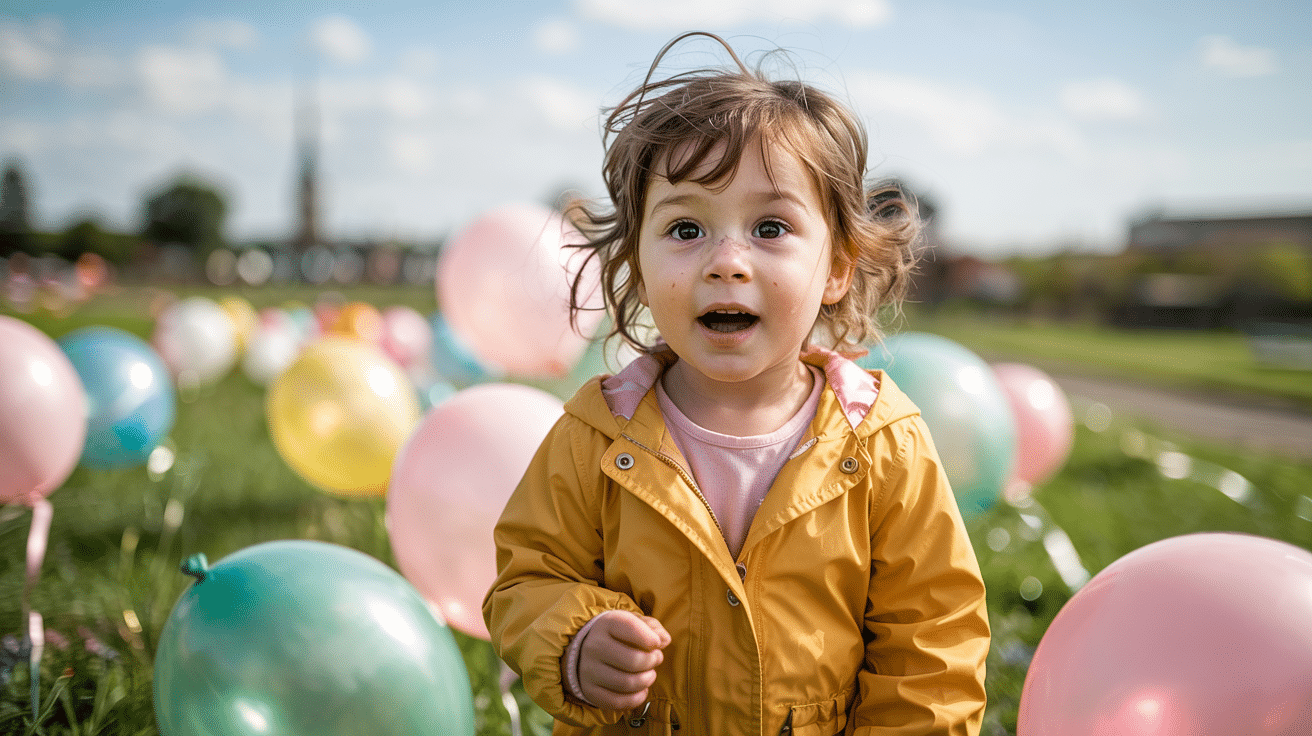
The sudden, wide-eyed feeling when something unexpected happens. Kids feel surprised by both good things (gifts) and startling things (loud noises). Surprise helps children learn and adjust to new information.
Here’s a list of emotions to help you understand surprise better:
-
Amazed: When something is so special you can hardly believe it.
-
Astonished: When something is so surprising you stop and stare.
-
Stunned: When news or an event leaves you unable to speak.
-
Jolted: When surprise gives you a sudden mental shake.
-
Confused: When something happens that doesn’t make sense to you.
-
Speechless: When you’re so taken aback you can’t find words.
-
Dumbfounded: When something is so unexpected you feel frozen.
-
Bewildered: When you feel lost because of sudden changes.
-
Shocked: When something happens that you never expected.
-
Startled: When a sudden noise or movement makes you jump.
-
Awestruck: When you see something so big or special you feel small.
-
Impressed: When someone does something you think is really good.
-
Intrigued: When something catches your attention and makes you wonder.
-
Baffled: When you try to understand but just can’t make sense of it.
-
Perplexed: When something is so confusing you keep thinking about it.
- Wonder: When surprise makes you feel like a child seeing magic.
-
Taken aback: When something catches you off guard.
-
Thunderstruck: When news hits you like a bolt from the blue.
-
Flabbergasted: When you’re so surprised you don’t know what to do.
-
Floored: When news knocks you down with surprise.
-
Blindsided: When something comes at you from nowhere.
Learning this list of emotions for kids opens the door to deeper understanding and better communication about feelings. When children can name what they feel, they gain more control over their responses.
Helping Children Express Their Emotions Effectively: Tips for Parents
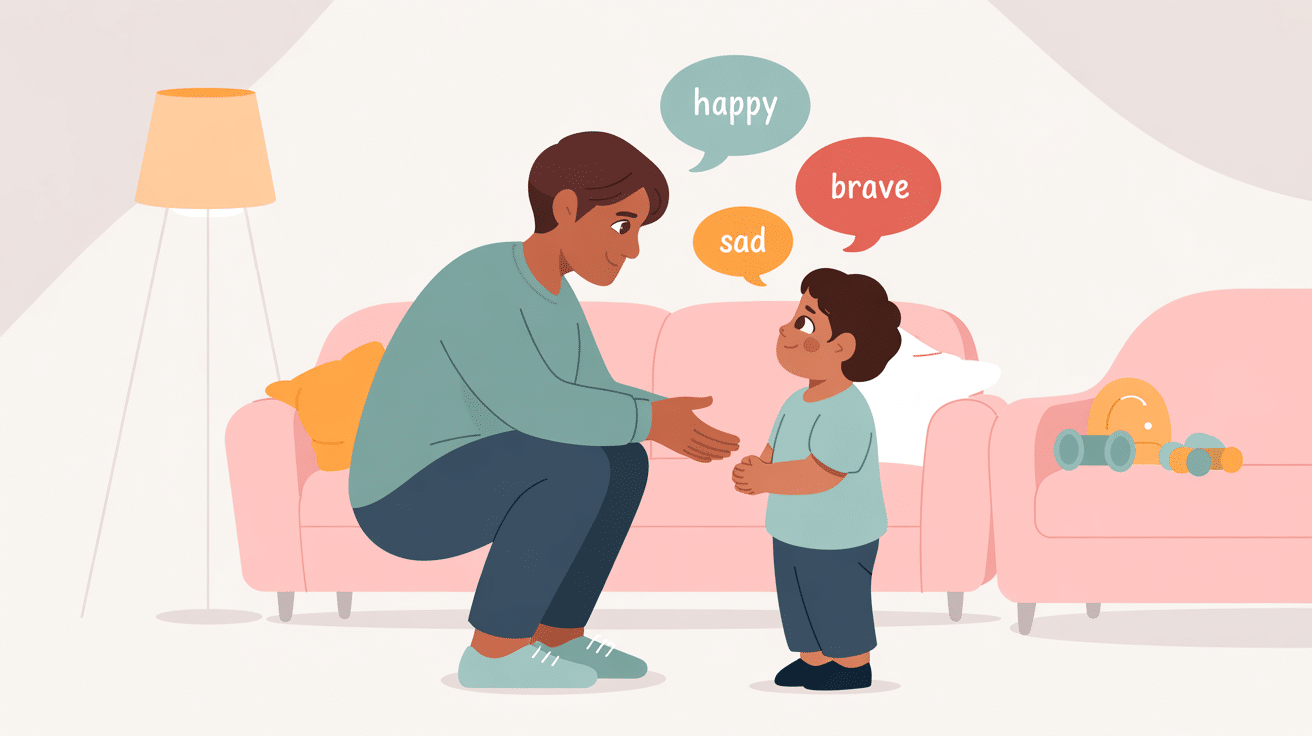
These five strategies can help your child learn to identify and express their feelings in healthy ways:
- Create a safe space: Children need to know their feelings won’t be judged or dismissed. When your child shares emotions, listen fully without rushing to fix the problem. A simple “I hear you” can make them feel valued and understood.
- Use feeling words often: Include emotional language in your daily conversations. Say things like “I felt happy when…” or “That made me feel frustrated because…” This gives kids a model for expressing their own feelings.
- Read books about feelings: Children’s books offer perfect opportunities to talk about emotions. Ask questions like “How do you think the character feels here?” and “Have you ever felt that way?”
- Name the feeling you see: When you notice your child experiencing an emotion, help them label it: “You seem upset about losing the game,” or “You look excited about the party.”
- Validate all emotions: Let your child know all feelings are okay to have, even tough ones. The focus should be on how we handle feelings, not on changing them.
Remember, teaching emotional expression takes time and patience, but these skills will serve your child throughout their entire life.
Fun Activities to Help Kids Learn About Emotions
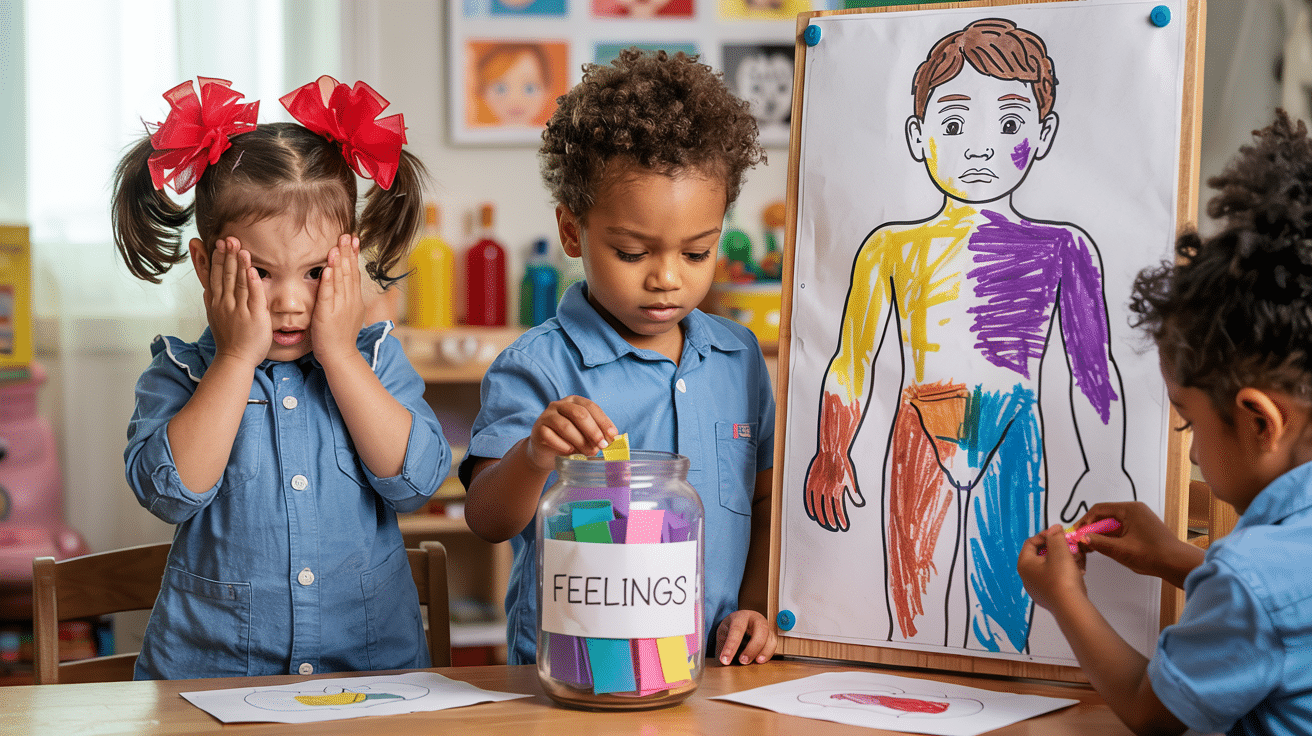
These simple activities make learning about feelings enjoyable and memorable for children:
Activity 1. Emotion Charades
Act out different feelings without using words and let others guess what you’re feeling.
- What you’ll need: Cards with emotion words or pictures, a timer.
- Instructions: Take turns picking a card and acting out the emotion. Other players must guess which feeling is being shown. Talk about when you might feel this way after each round.
Activity 2. Feelings Jar
Create a visual tool to help children express their changing emotions throughout the day.
- What you’ll need: Clear jar, colored paper strips, markers, glue.
- Instructions: Assign colors to different emotions. When children feel a certain way, they can write why on that color strip and put it in the jar. Review the jar together at day’s end.
Activity 3. Body Map of Feelings
Help kids understand how emotions feel physically in their bodies.
- What you’ll need: Large paper, markers, crayons.
- Instructions: Draw an outline of a body. Have kids color where they feel different emotions (maybe red for anger in fists, blue for sadness in chest). Talk about these physical signs of feelings.
These activities make talking about emotions a natural part of everyday life rather than something difficult or strange.
The Bottom Line
Understanding emotions helps children develop skills they’ll use throughout their entire lives.
This guide covered an essential list of emotions for kids, from happiness and sadness to anger, fear, and surprise, giving parents and teachers a vocabulary to help children express themselves.
When adults provide safe spaces for emotional expression and offer activities that make learning about feelings fun, children gain confidence in managing their emotions.
This builds stronger relationships and better problem-solving abilities for the future.
The path to emotional literacy doesn’t get complete overnight. It requires patience, practice, and consistent support from caring adults.
What emotions do the children in your life struggle with most? Share your experiences in the comments below and join the conversation about helping kids understand their feelings better!







